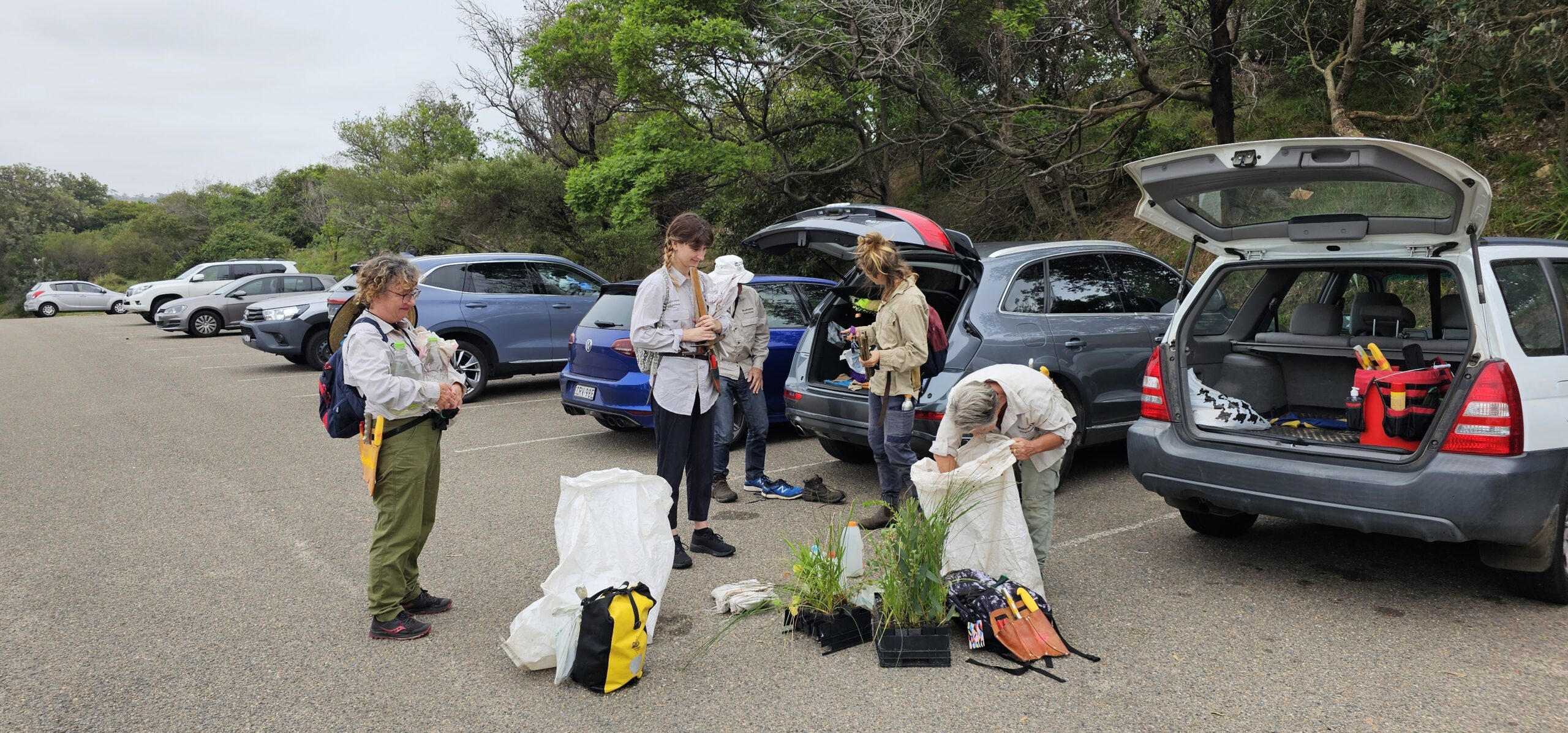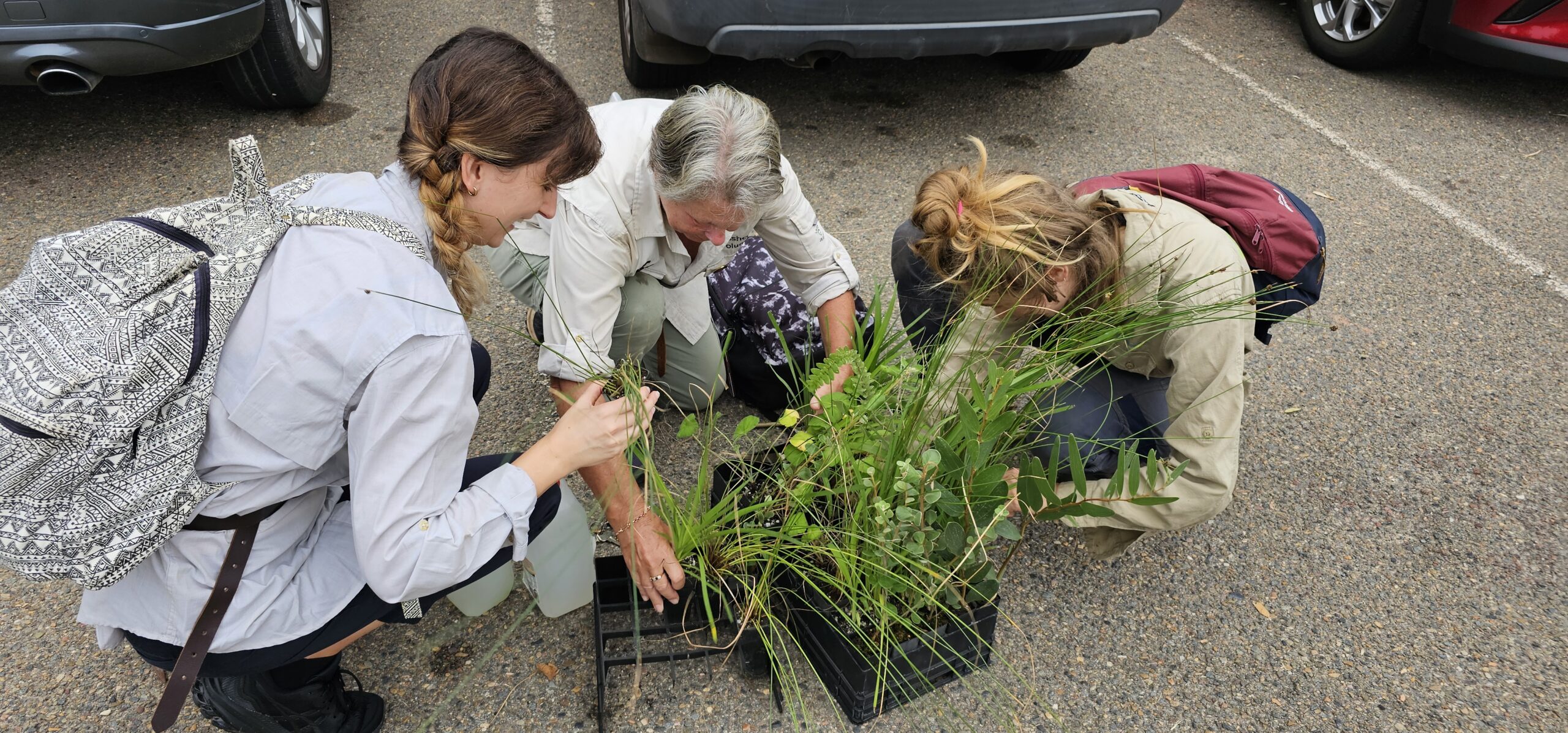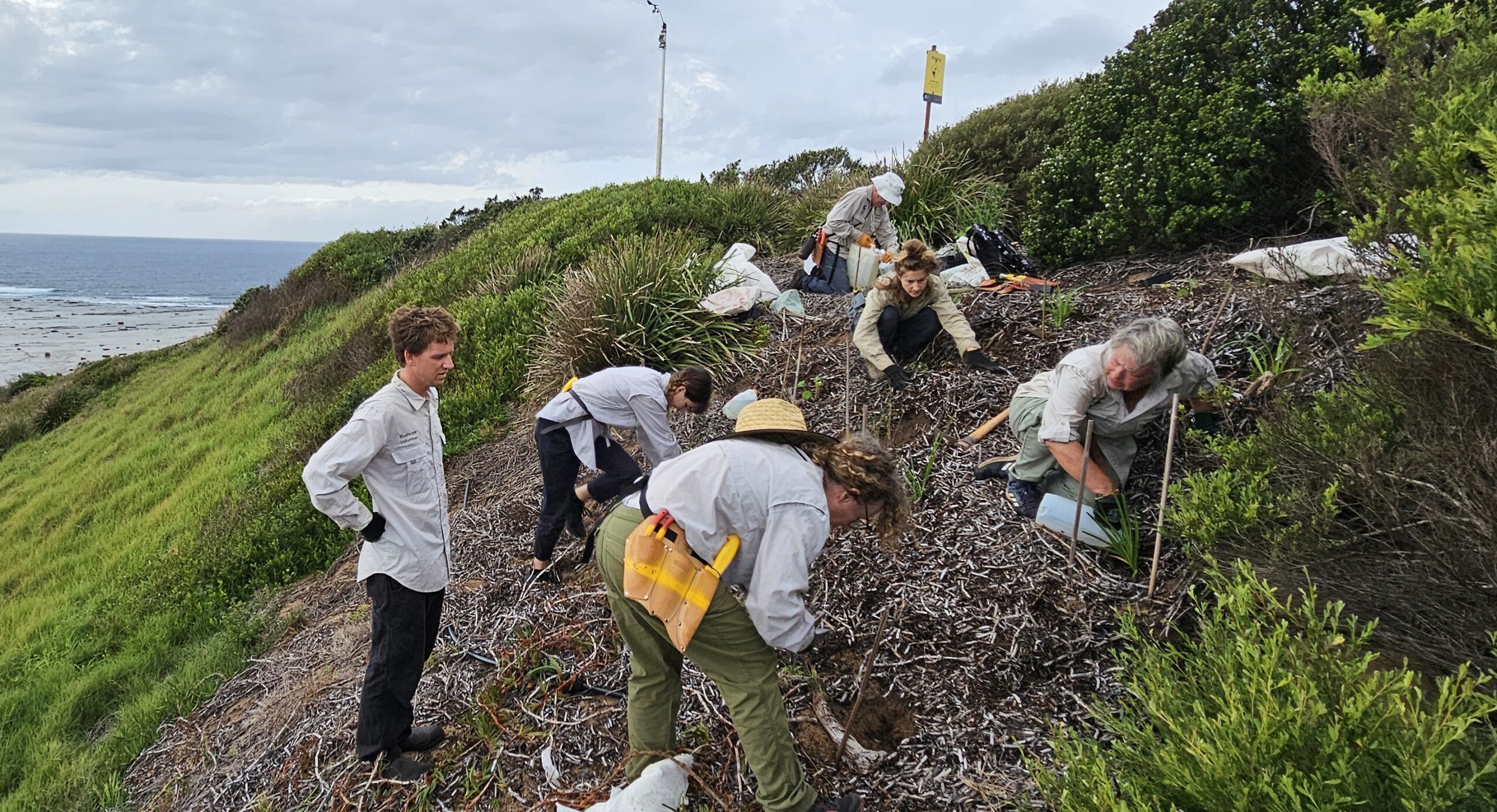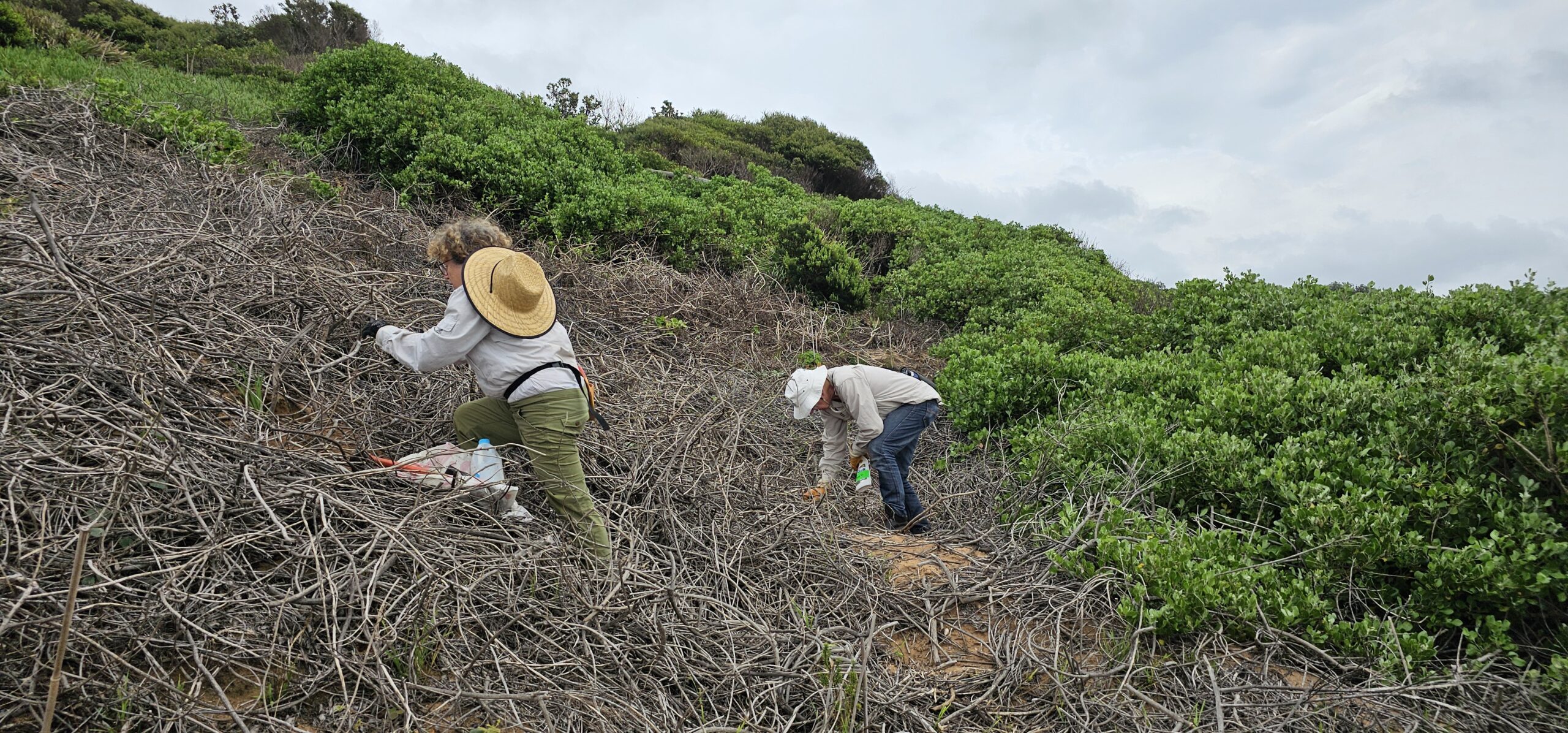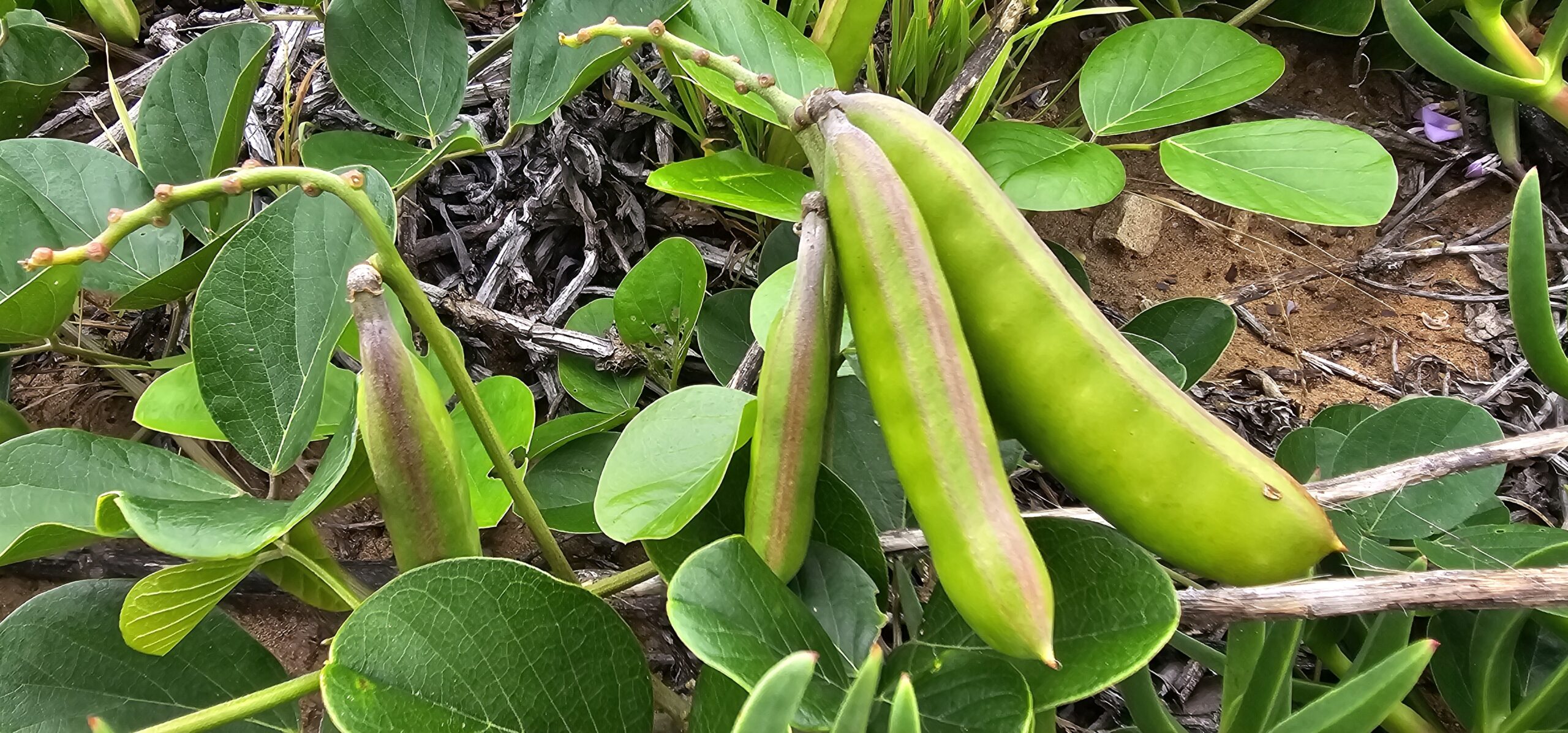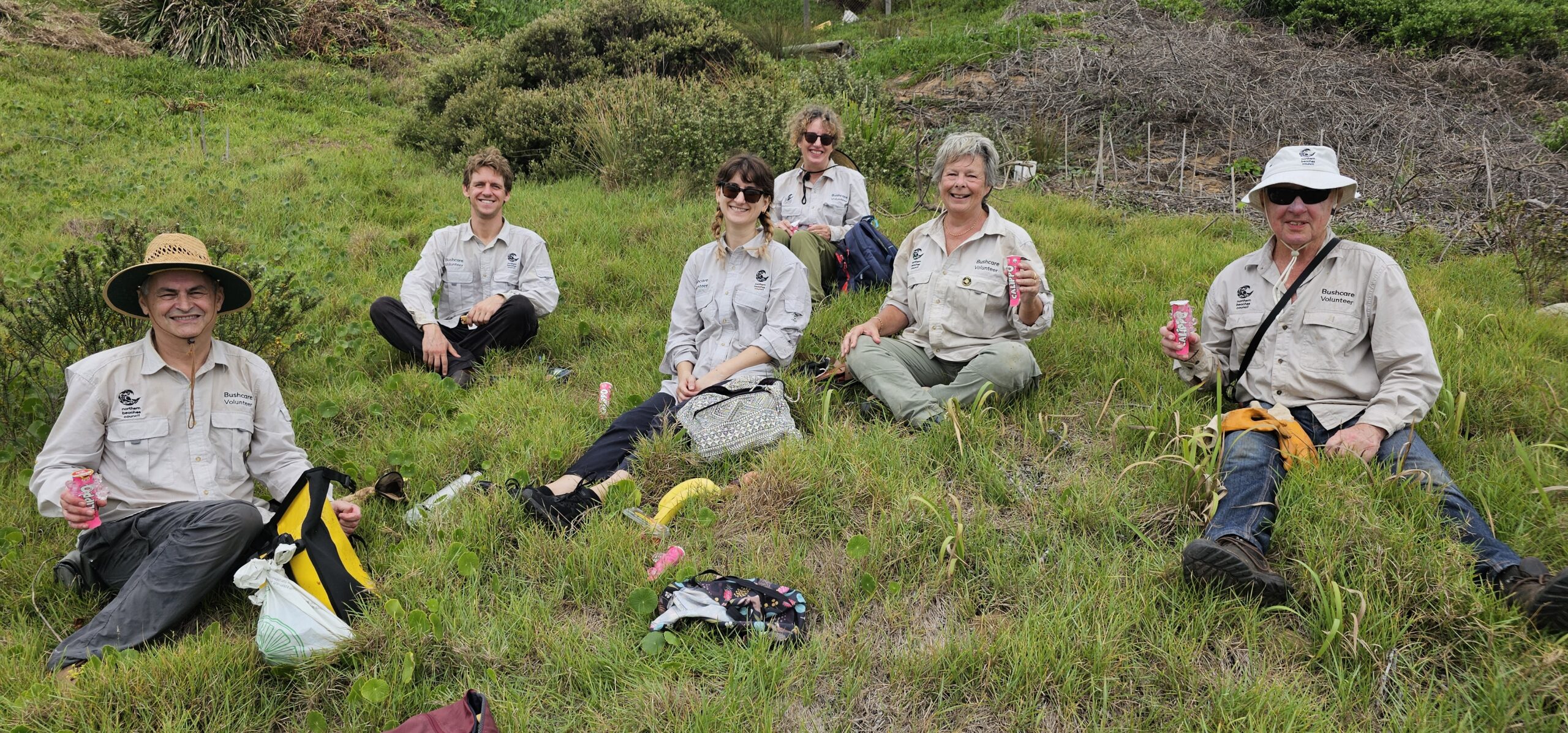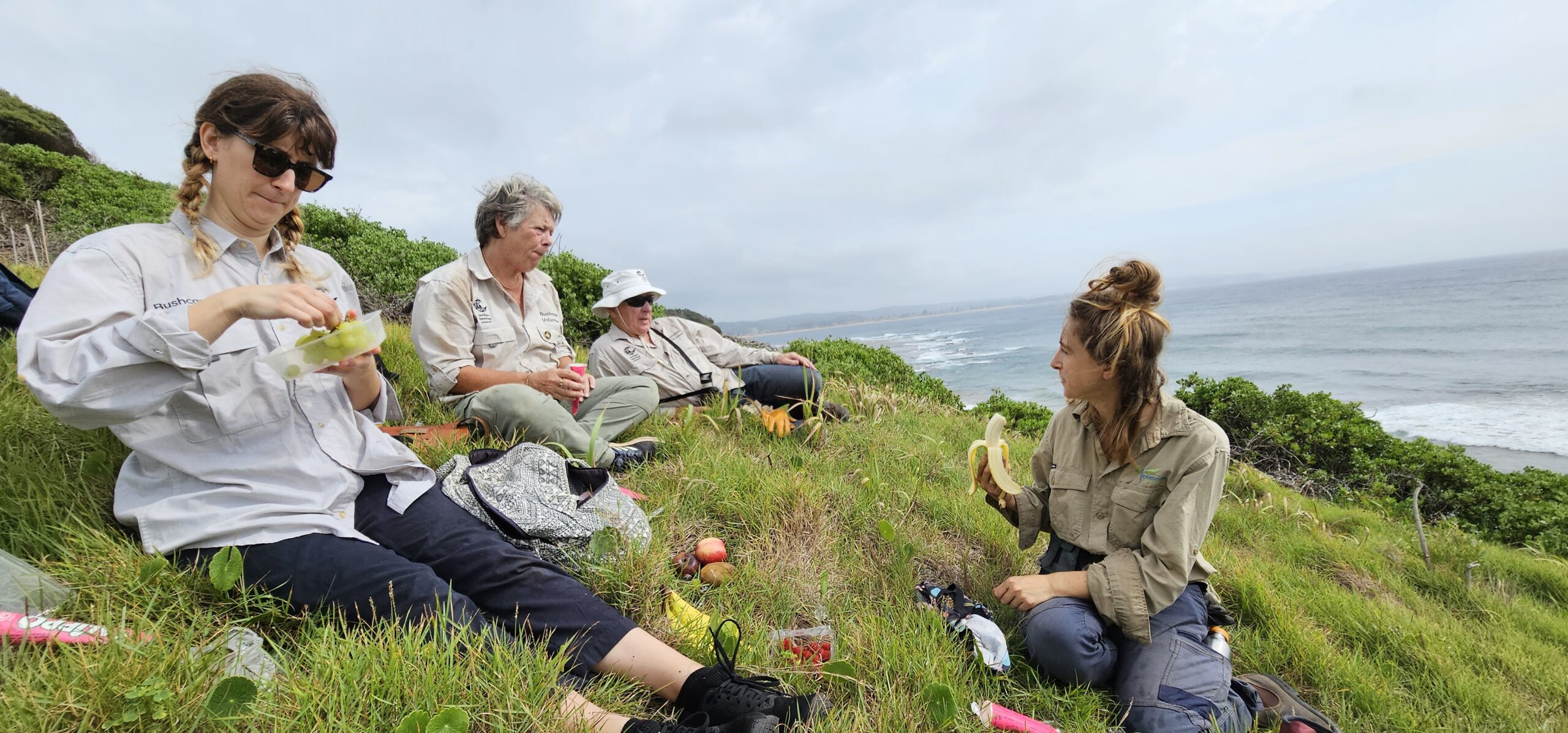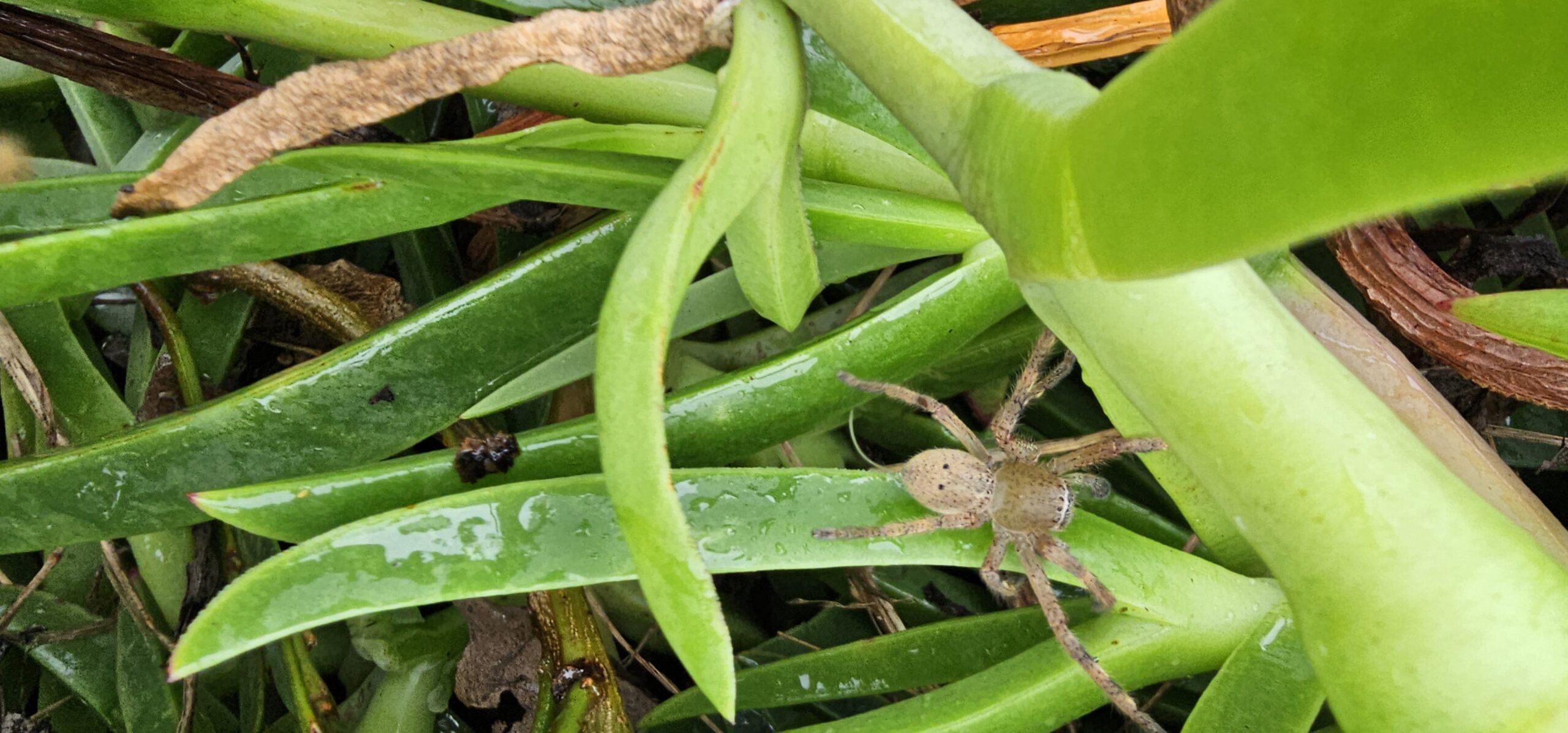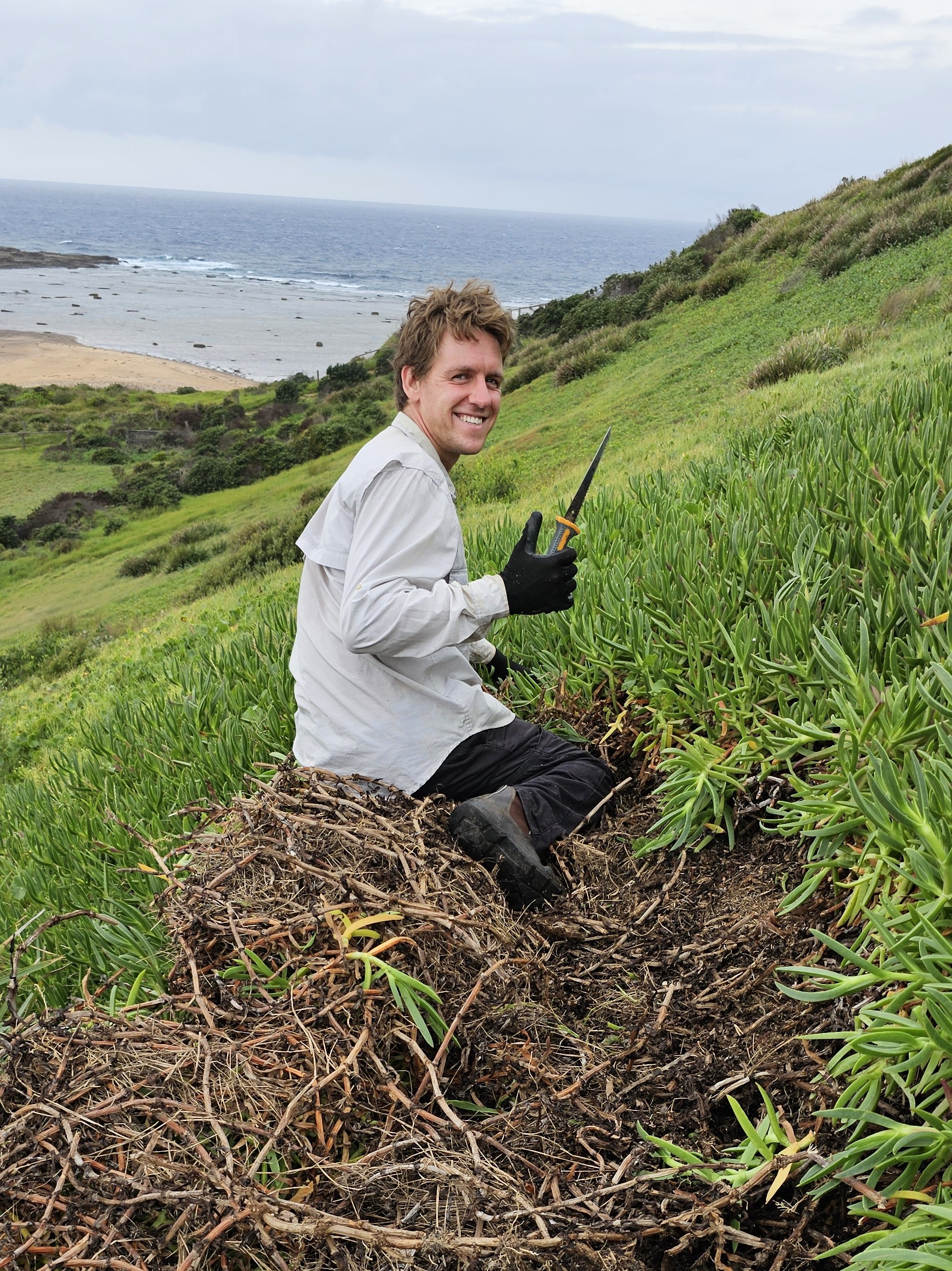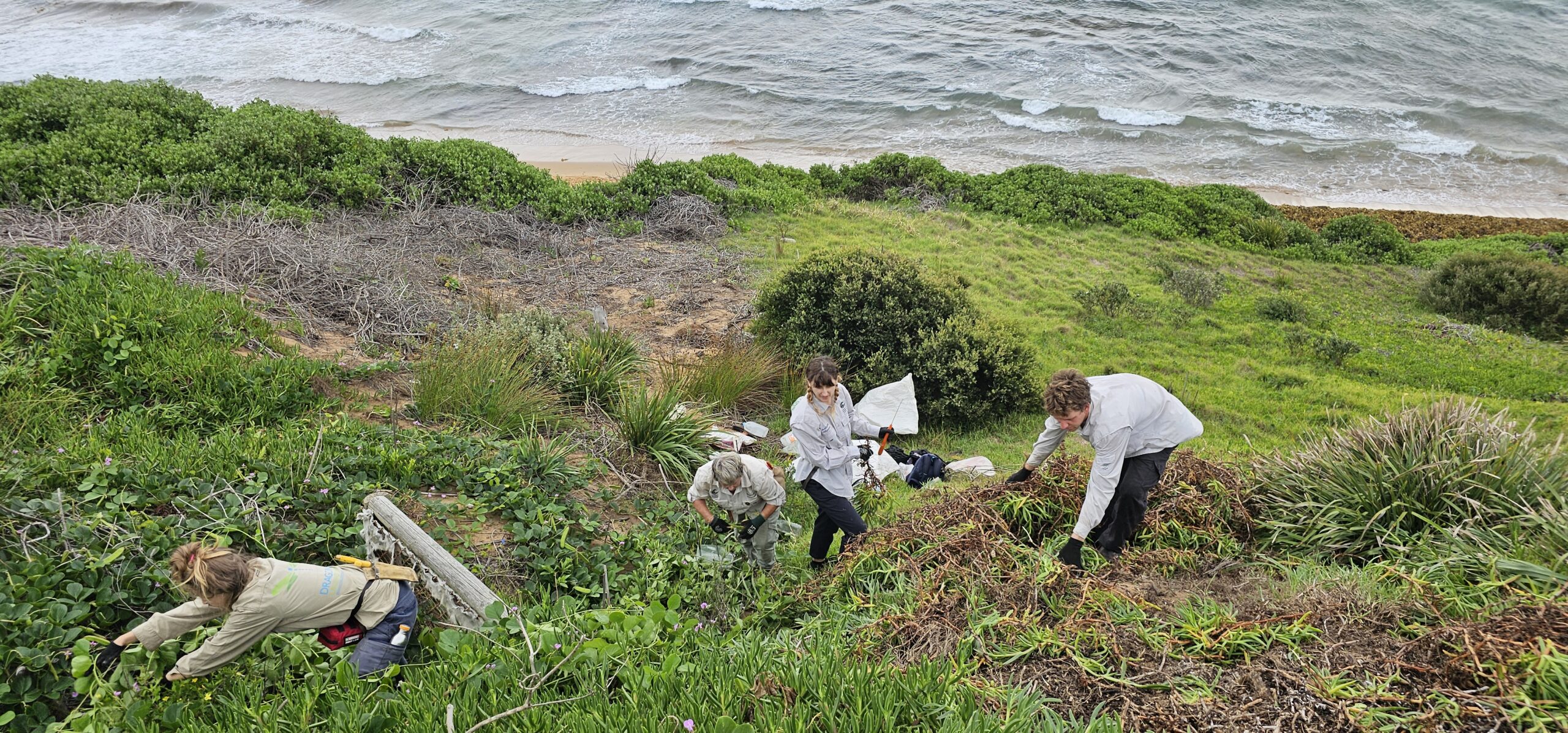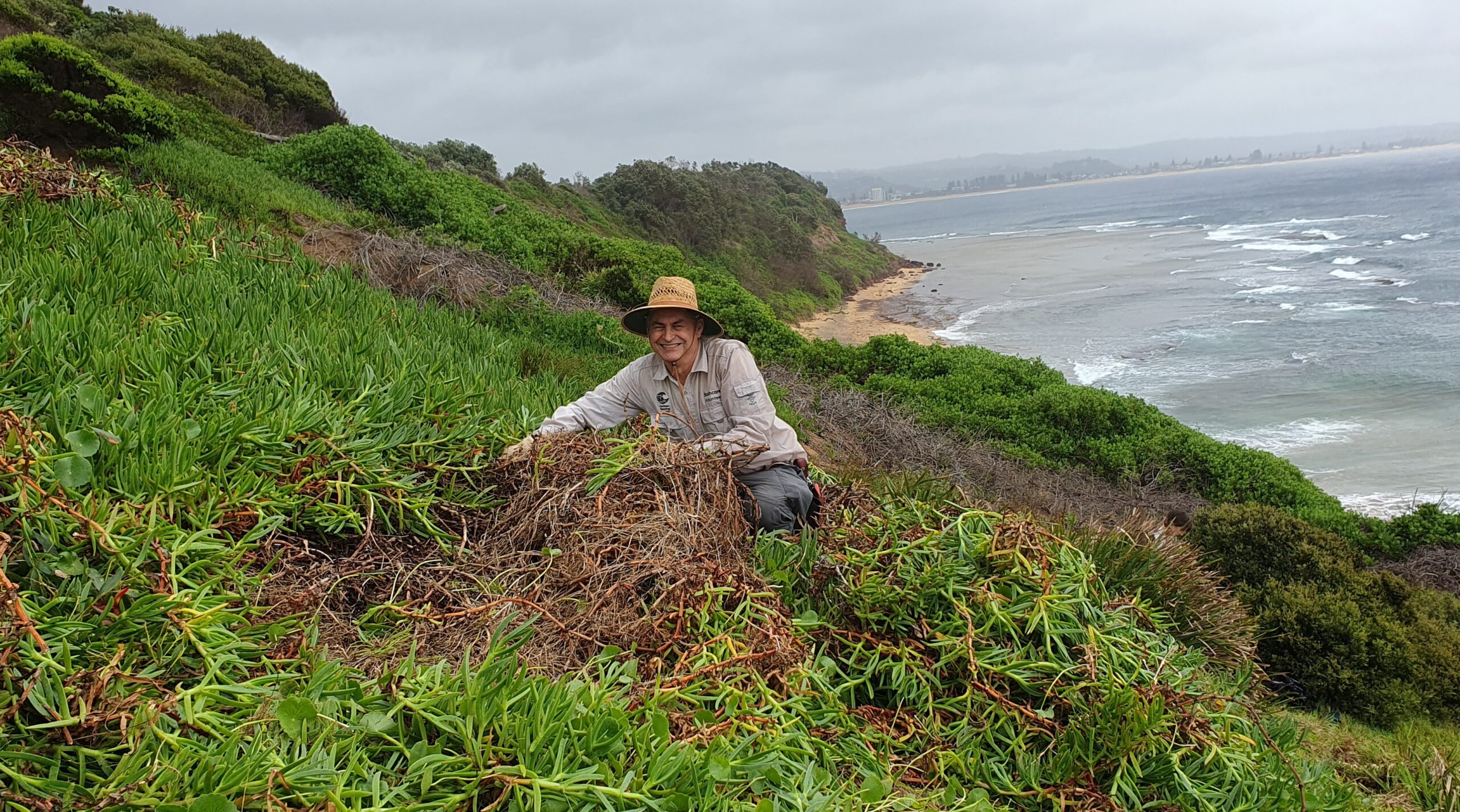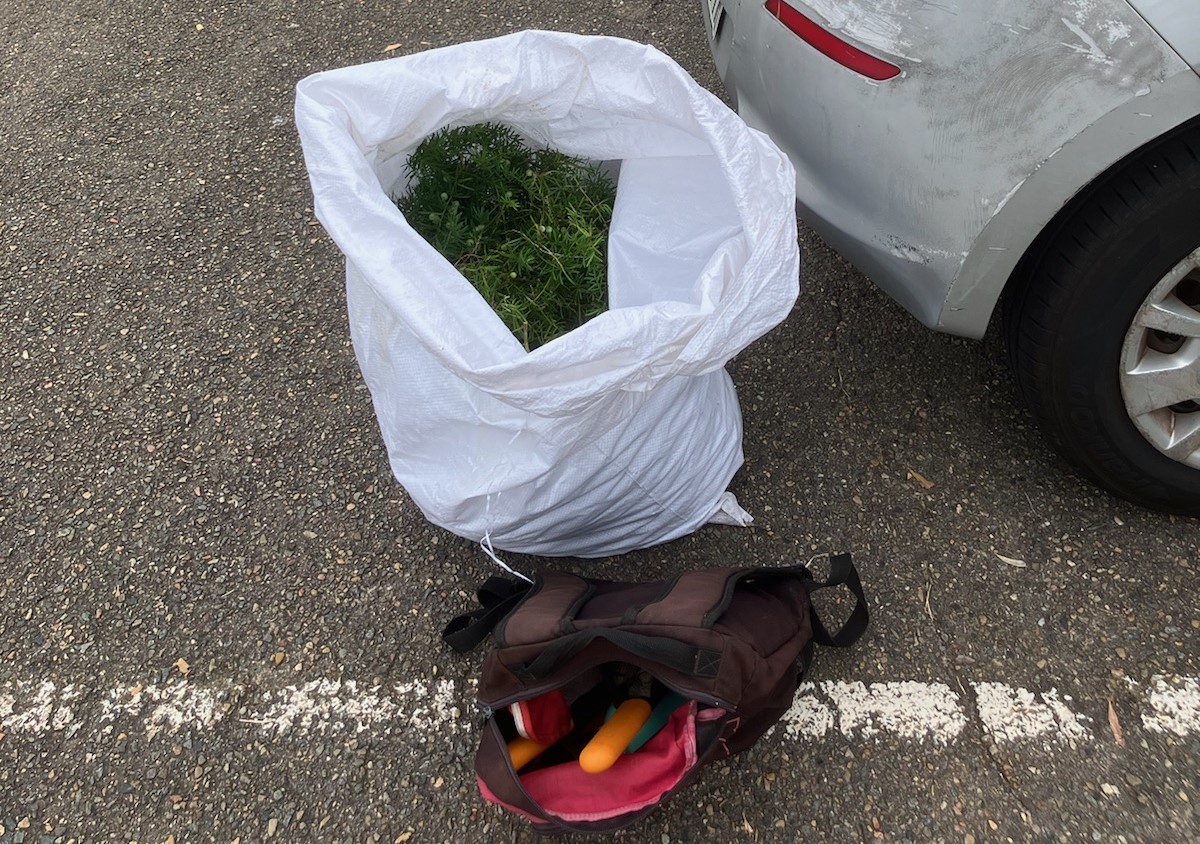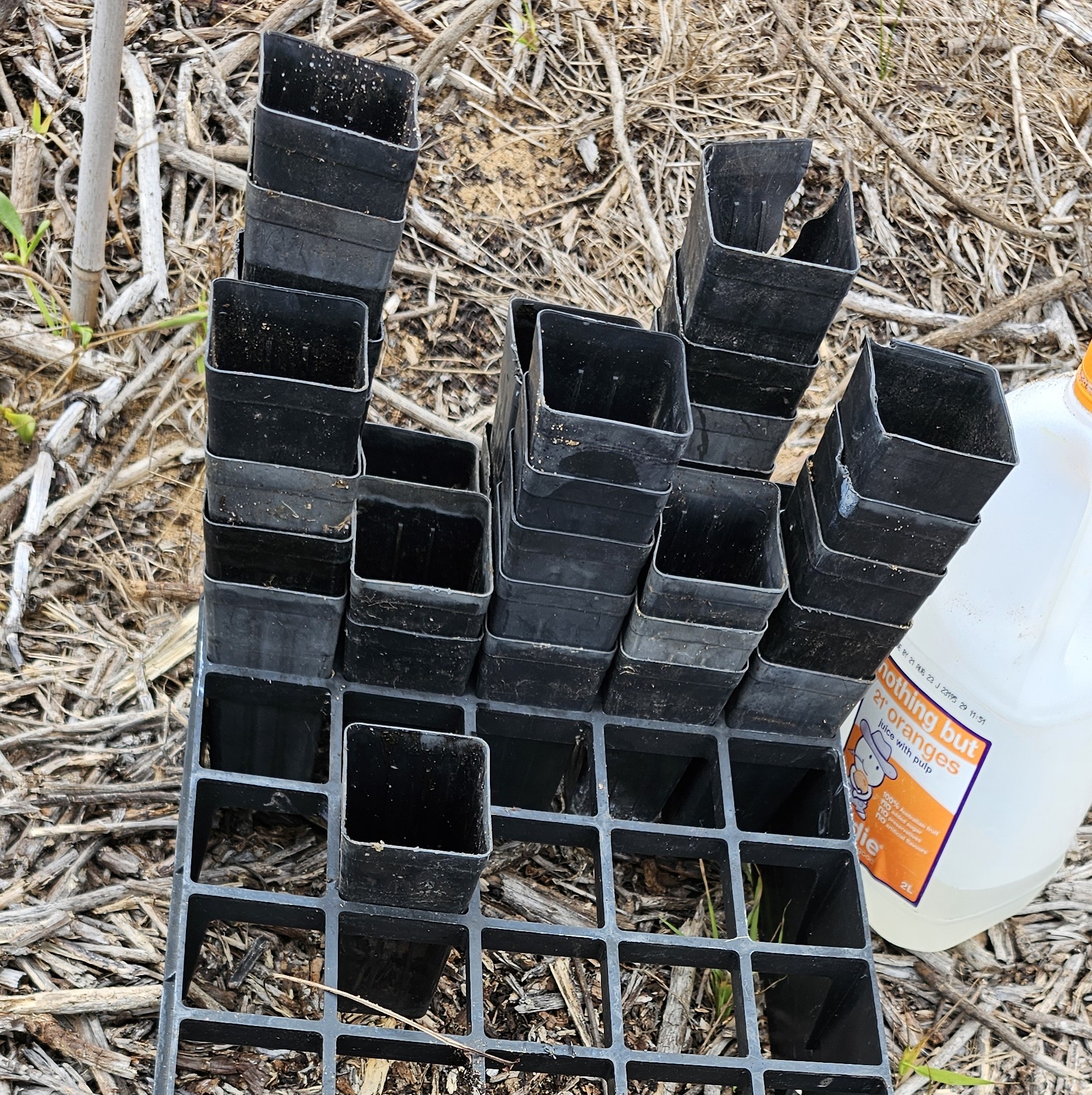It was a warm muggy morning, without a breath of wind as the Long Reef Bushcare group assembled in the carpark. Unlike last month where the huge surf attracted lots of people, the hot, humid air and flat sea seems to have kept everyone at home. Except of course our dedicated bushcare team. But today was an exciting and important morning, for we were going to reap the rewards of all the weeding we have been doing over the past few months and plant some natives!
We gathered our tools and seedlings, allocated bottles of water and discussed our plan – start at the top and work down the slope, building terraces in which to place the seedlings, to help catch and retain water. In the exposed environment of salt and wind, the little seedlings will need all the help they can get.
It was all hands on deck as the enthusiastic group started planting the top slope. We first cut terraces in the sandy soil to help retain water, reinforcing the downslope side with sticks and bamboo stakes, before planting the seedling and providing plenty of water. Planting here is such a beautiful experience, with the ocean views and the sea breeze, with a murder of ravens on the wing overhead. Ivana did one of the first plantings, exhorting: “Live long and grow well!” to the little seedling before moving onto the next one, all the while being careful not to step on anything delicate.
With our first batch of plants firmly in the ground, we proceeded down the slope towards the gully, where Des and Clare prepared the ground for our new green residents.
The top of the gully area is looking really healthy, flush with the pink flowers and the lush green of the beach beans (Canavalia rosea). These were producing some huge beans now, some of the biggest we have ever seen.
We had a variety of plants for this area, to suit the varied terrain of steep slopes and flat sandy sections. Our trusty lomandras were first to go in, along with dianellas, which look quite similar to the uninitiated, and Kathy and Lisa showed us the subtle differences.
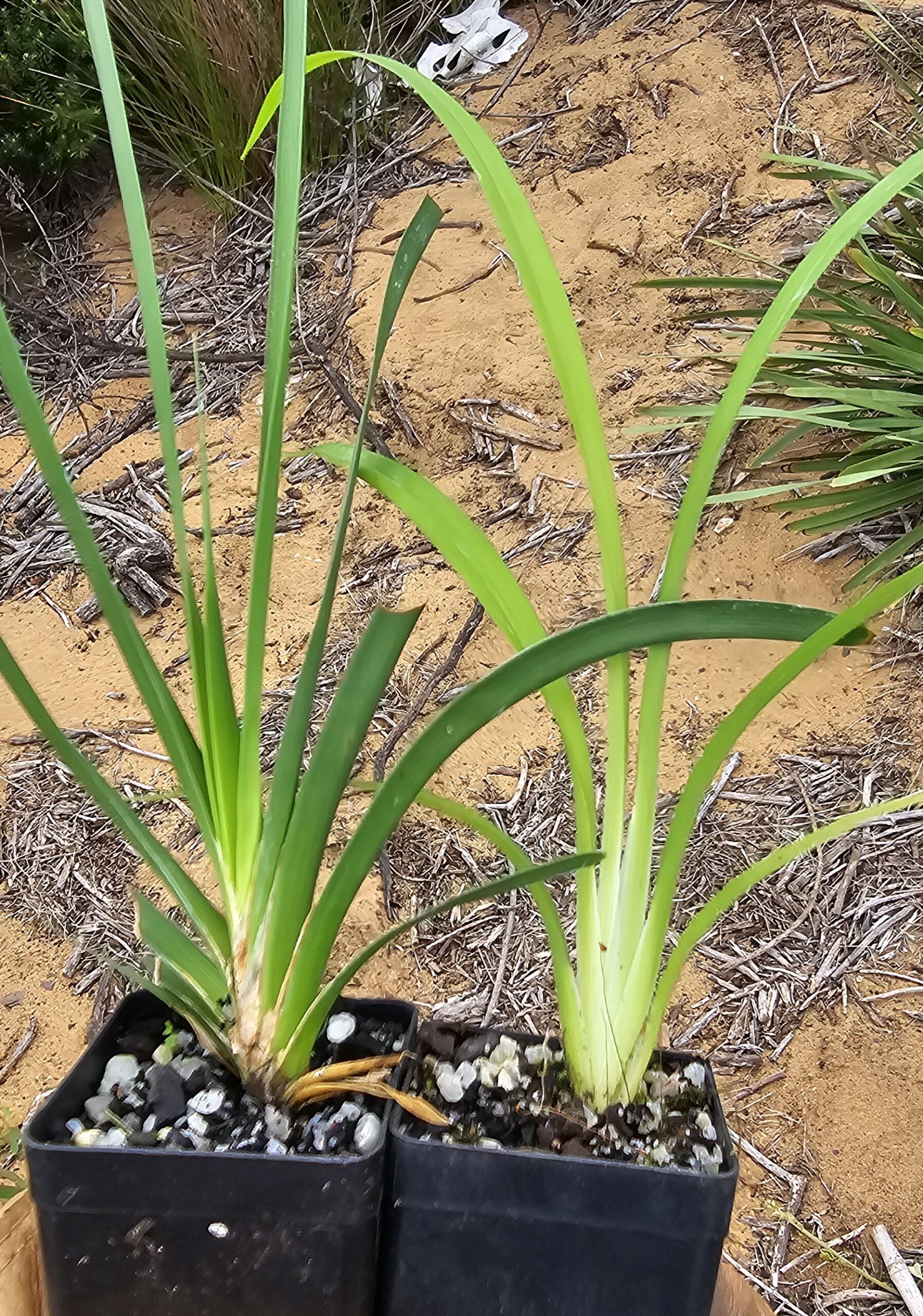
Lomandra on the left, with flat or v-shaped tips, and Dianella on the right, with pointed tips and a flat base.
At morning tea, we enjoyed the view and the fruit that Kathy had brought for us, along with Calippo ice-blocks to keep us cool.
After a nice rest and chat, we continued with our ongoing control of the non-native pigs face on the slope next to the gully, while Des worked on the weeds around the Correa alba shrubs higher on the slope. Alex got stuck into removing the pigs face, using a serrated saw to good effect to cut trenches across the slope. We used two techniques to deal with the cut pigs face, some of it being rolled into big tubes across the slope to control erosion, while some of it was thrown onto the uncut pigs face higher up the slope to reduce sun exposure and further challenge its growth.
Many species live in the vegetation on Long Reef, including animals that would not be expected in this often dry environment. This spider was thriving in the moisture laden vegetation that lies deep down near the soil.
As we continued to weed, the wind picked up and a short rainstorm passed overhead, the cool rain refreshing our little group and also providing some much needed water to our newly planted seedlings.
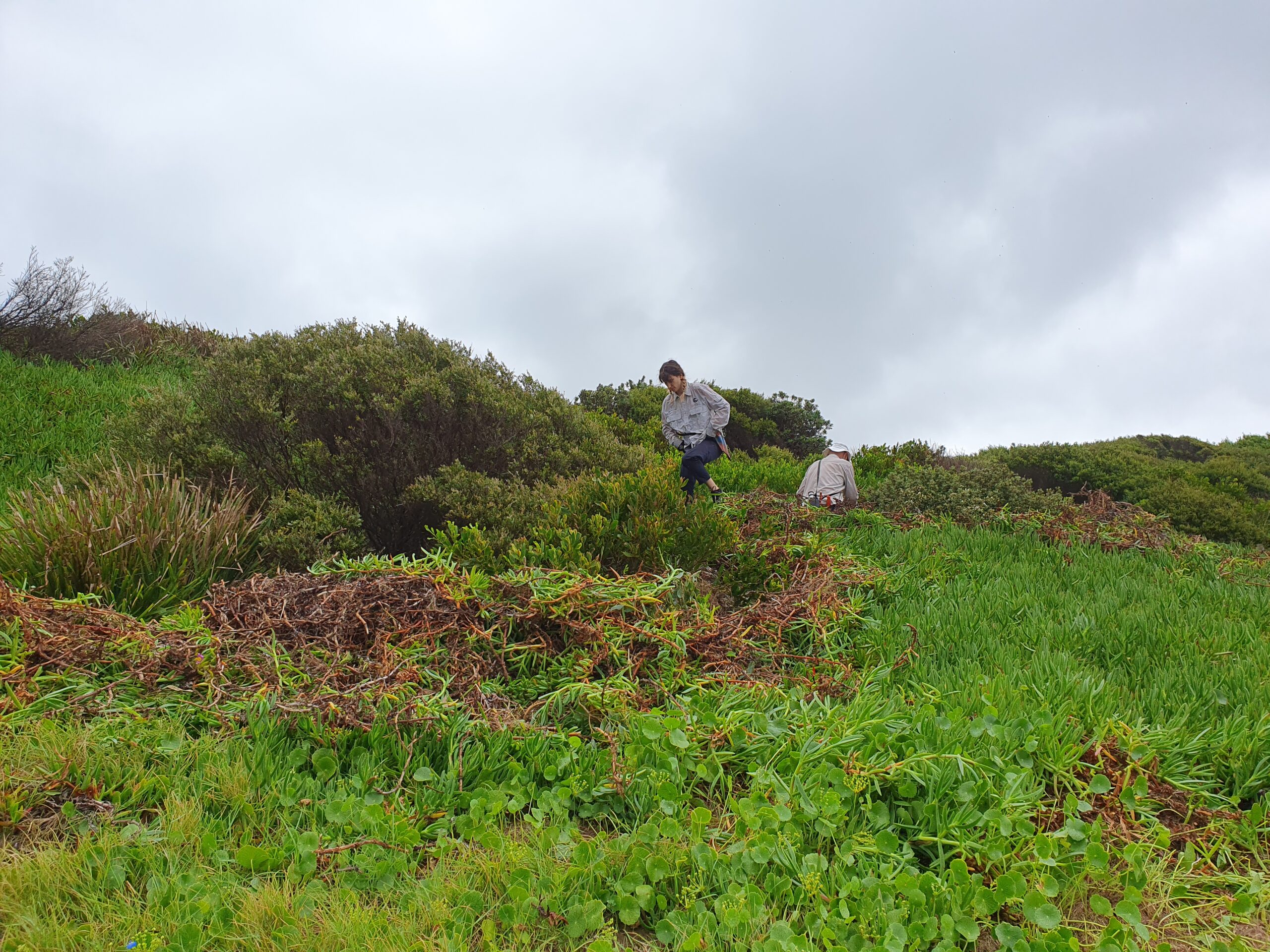
Des and Ivana remove pigs face along the fence. It is such a strong grower, it needs regular monitoring.
Meanwhile, Julie worked high on the slope above our heads, continuing with the process of keeping the asparagus ferns at bay, she collected a big bag full of tubers and berries by the end of the morning.
As the clock struck 12, everyone was so engrossed in work and invigorated by the cooler weather that we continued a little bit longer, before packing tools and heading back up the slope.
It was satisfying to see the empty seedling pots and we were well pleased about the amount of work we had achieved that morning.
Thanks to Julie, Lisa, Des, Kathy, Clare, Alex, John, Ivana for another lovely Reefcare morning.

